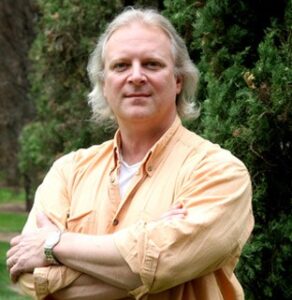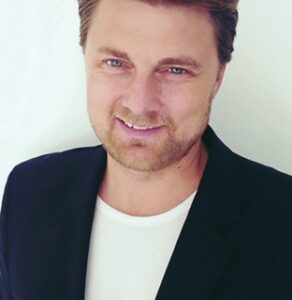Defining the New Normal
A deadly drug epidemic is spreading: According to data from the Institute for Health Metrics and Evaluation, people between the ages of 20 and 29 in high-income countries are three to four times more likely to die from opioid use than they were 20 years ago.
Policymakers and health care officials are struggling to stem the crisis. However, they may soon get a helping hand from an unlikely source: artificial intelligence (AI) and cognitive technology. IBM Watson, the division developing IBM’s cognitive computing technology, recently launched a Watson Health partnership with global health firm MAP Health Management to fight opioid addiction relapses. Watson will analyze streams of raw data from care providers’ handwritten notes and real-time data sent via wearables to identify patients with a high risk of relapse. These insights will help doctors, nurses and social workers respond to risk factors earlier—and potentially save lives.
“What we are doing has profound implications for society, people and the way we live our lives,” says Robert High, IBM fellow, chief technology officer and vice president, IBM Watson, Austin.This predictive approach to drug treatment would not have been possible just a few years ago. And it is just one example of what IBM’s game-changing AI can do. Watson—the first computing system that can answer questions posed by humans in their natural language—is helping organizations across industries pursue breakthroughs that could improve breast cancer treatment, evolve education tactics, connect cars to the internet of things (IoT), streamline emergency food delivery and more.
Practical AI tools such as Watson’s do not come out of nowhere. Engineers worked for more than two decades to create a system that could process natural language and provide relevant responses. Before Watson, the accuracy rate for cognitive machine answers to questions asked by humans was only 25 to 30 percent, Mr. High says.
To more quickly develop game-changing innovations that will reshape the competitive landscape, organizations must focus on transforming their cultures—and learn to fail fast. The brands that will lead in the world of tomorrow are setting audacious goals, charting new paths and rewriting modern rulebooks.
“When you are trying to build something totally new, you can’t put people under artificial pressure. You need to give them the space and opportunity to respond.” —Robert High
A Different Way of Working
Why was IBM able to succeed where other organizations stumbled? According to Mr. High, the key was cultivating the industry’s top talent and giving the team the time and tools needed to challenge the status quo.
“People like being a part of something incredible. Share on XWhen they have clarity of purpose, they will dedicate their skills, focus and talent to it,” he says.
Mr. High connected with each team member individually to understand their capabilities and help them close knowledge gaps. He often shifted team members around so they could learn from each other, which also helped spark new ideas. “That way the work never gets stale,” he says.
While he continually encouraged the team to take risks and try new things, he steered clear of setting crazy deadlines. “When you are trying to build something totally new, you can’t put people under artificial pressure,” he says. “You need to give them the space and opportunity to respond.”
Instead, the team took a “test and learn” approach. “There were times when we recognized a formula wasn’t quite solved yet, so we kept iterating before pushing it into the marketplace,” he says. “These kinds of moves made at the early stage are incredibly important for future growth. You have to have the opportunity to make mistakes without fear.”
“What we are doing has profound implications for society, people and the way we live our lives.”
—Robert High, IBM fellow, chief technology officer and vice president, IBM Watson
Watson’s relative autonomy helped it innovate within a massive global company. IBM created an independent business unit that stands on its own but interfaces with other units to ensure its efforts align with the company’s broader business goals. “It’s like a really well-invested startup company within the company,” Mr. High says. “It was necessary in the first few years for Watson to operate with a high degree of autonomy, self-selection and independence before it could fully scale up.”
This model is ideal for developing game-changing products: It gives teams the freedom to operate without the typical red tape, which fuels creativity and catalyzes innovation, says Mr. High. “It speaks to the ideal set of dynamics needed to take risks and to ultimately be successful,” he says.
Starting From Scratch
Mr. High is fortunate to have the support and resources needed to nurture a team that includes some of the most brilliant minds in tech. But not every game-changing innovation is born into such abundance.
Take Coinify. In 2014, serial fintech entrepreneur Mark Højgaard co-founded the blockchain payment service company Coinify with the goal of mainstreaming the digital currency payment processing. Mr. Højgaard made the move after recognizing an opportunity in the market to legitimize bitcoin, the most commonly used digital currency, which uses encryption to secure the transfer of funds online.
“It was [the] early days in the crypto currency industry,” says Mr. Højgaard, now the company’s CEO. He knew the virtual currency could become mainstream, but only if it was accompanied by a legitimate financial infrastructure. So that is precisely what Mr. Højgaard set out to achieve with Coinify. “We wanted to disrupt the online payments space,” he says. “Our approach was to address the existing pains within traditional payments while keeping the upcoming legislative framework in mind.”
Establishing that infrastructure in such a blue ocean at the time required overcoming two key hurdles. First, Coinify services had to provide easy access to the bitcoin ecosystem. This was done by communicating novel tech-heavy financial innovation in a simple way. Besides making bitcoin payments easy to comprehend, it had to be easy for customers to get started. He decided to bridge the entry to blockchain-powered payments with the ‘old world’ via established payment systems as payment cards and bank transfers. Secondly, he had to convince vendors and financial institutions that the system could be trusted. And he had to do it all with a limited startup budget that consisted of funding from the Danish government and a little seed capital.
Mr. Højgaard’s solution? Build a team of recently graduated, tech-savvy millennials who would bring boundless energy, fresh market insights and a thorough understanding of blockchain to the project. He paired these youthful go-getters with a small team of experienced C-level executives who wanted to be part of something disruptive. “If you are going to be taken seriously in the financial industry, you need a few suits on your team who can speak the language of compliance and regulatory issues,” he says. The executives are leading the charge to educate bankers and vendors about the security of blockchain and digital currency, and mentoring the millennials who are building and updating the infrastructure. “It is the perfect blend of talent and ambition,” Mr. Højgaard says.
“Fast failure is infused into our culture. It’s not always easy to work in this environment, but it’s always a lot of fun.” —Igal Elbaz, vice president of ecosystem and innovation, AT&T
From the Ground Up
Disrupting the heavily regulated finance sector requires keeping a close eye on compliance. To carve out its own space, Coinify had to show key industry players it could keep transactions secure. “It was one of the biggest barriers,” Mr. Højgaard says. “How do you regulate yourself when no one else will?”
With no clear guidelines to follow, the team created its own. It adopted due diligence best practices from the global financial industry, including requirements for government-issued photo identifications, proof of residence and other appropriate documentation from all vendors.
“We do the same level of due diligence, or even higher, than any normal payment service provider because we can’t afford to make any mistakes,” Mr. Højgaard says.
The company also decided early on to refuse any transactions related to potentially illegal or unethical businesses. This was a big decision, as bitcoin and other virtual currencies are pseudoanonymous, and they were at that time likely to attract less savory clients.
“It was the obvious choice for the company,” Mr. Højgaard says. “Too often with startups, as soon as you get clients you get sloppy, and that’s when things fall apart. If you have an idea that has the potential to be a game changer in the finance industry, you have to have someone driving compliance in the back office.”
“Too often with startups, as soon as you get clients you get sloppy, and that’s when things fall apart. If you have an idea that has the potential to be a game changer in the finance industry, you have to have someone driving compliance in the back office.”
—Mark Højgaard, co-founder and CEO, Coinify
In the three years since Coinify launched, the company has seen more than 30,000 merchants across 115 countries sign up; it now processes payments in 14 different digital currencies. Beyond the payment processing services, Coinify offers bitcoin trading to thousands of its customers, as well as Blockchain.info’s customers via partnership, across Europe. It has been recognized on H2 Ventures and KPMG’s Fintech 100, a list of top companies driving digital disruption within the financial services industry. But Mr. Højgaard and his team are determined to avoid obsolescence in the fast-moving fintech world: They have established the Coinify Innovation Lab for financial industry clients to build the next generation of blockchain-based proof of concepts, including solutions for micropayments and real estate transactions.
Rapid-Response Innovation
Each center is dedicated to a specific industry. The Houston-based AT&T Foundry, for example, focuses on connected health care. One of the two centers in Plano, Texas is dedicated to IoT. The one in Israel is all about cybersecurity and business processes. “Every Foundry is an ecosystem, and everything we do revolves around solving real business problems for AT&T customers,” says Igal Elbaz, vice president of ecosystem and innovation at AT&T in Dallas. In industries where disruption is expected to take off over the next few years, game-changing innovation is just table stakes. Telecommunications conglomerate AT&T is gearing up for the challenge with its foundries—six standalone innovation centers located around the world where teams of engineers and developers build relationships to rapidly deliver cutting-edge applications and services for customers.
Foundry teams meet with hundreds of potential partners—including venture capitalists, startups and other education and not-for-profit organizations—every year looking for game-changing ideas that address problems in the marketplace. Prospective collaborators pitch their idea and if the foundry chooses to fund the project, team members from AT&T and the other organization have 12 weeks to rapidly iterate a prototype to determine whether the technology will add value to consumers. “If the answer is no, we move on. If it’s yes, we develop a licensing agreement.”
The teams take a fast-paced and agile approach. If prototypes fail, the team simply abandons the project and focuses on the next big thing. “Fast failure is infused into our culture,” Mr. Elbaz says. “It’s not always easy to work in this environment, but it’s always a lot of fun.”
Since launching the first three foundries in 2011, the network has generated several innovations that are changing the way people live and work. The Connected Health foundry in Houston, for example, collaborated with wearables startup Aira to develop glasses that help blind and visually impaired users navigate their environment by connecting them to a telecommunications network of certified human agents. “Using a video camera, the agents can ‘see’ from the wearer’s perspective in near real time and communicate guidance,” Mr. Elbaz says. One user was even able to run a marathon using the glasses.
And at the Palo Alto, California foundry, which focuses on network transformation and other technologies such as software-defined networks, the team is developing drone prototypes that emergency response teams can use in crisis situations. “Imagine firefighters getting a live, overhead view of a forest fire so they can map it and contain it,” he says.
What makes the foundry approach unique is that it gives teams the freedom to rapidly iterate with, and on behalf of, customers while remaining strongly linked to the business, Mr. Elbaz says. “The reason my teams are successful is not because they operate as an island of innovation, but because they act as an extension of the company.”
Each foundry has dedicated legal and supply chain personnel, and every project has a business unit sponsor. “That creates awareness and buy-in from the start,” he says. This integration ensures the foundry teams focus on relevant innovation projects, and it also helps Mr. Elbaz keep corporate leaders invested in the operation. “I don’t have to waste time banging on doors to win support because they already see the business benefits,” he says. “Whenever our leaders do a keynote speech they always mention the foundries. That tells you they are excited about the work we are doing.”





